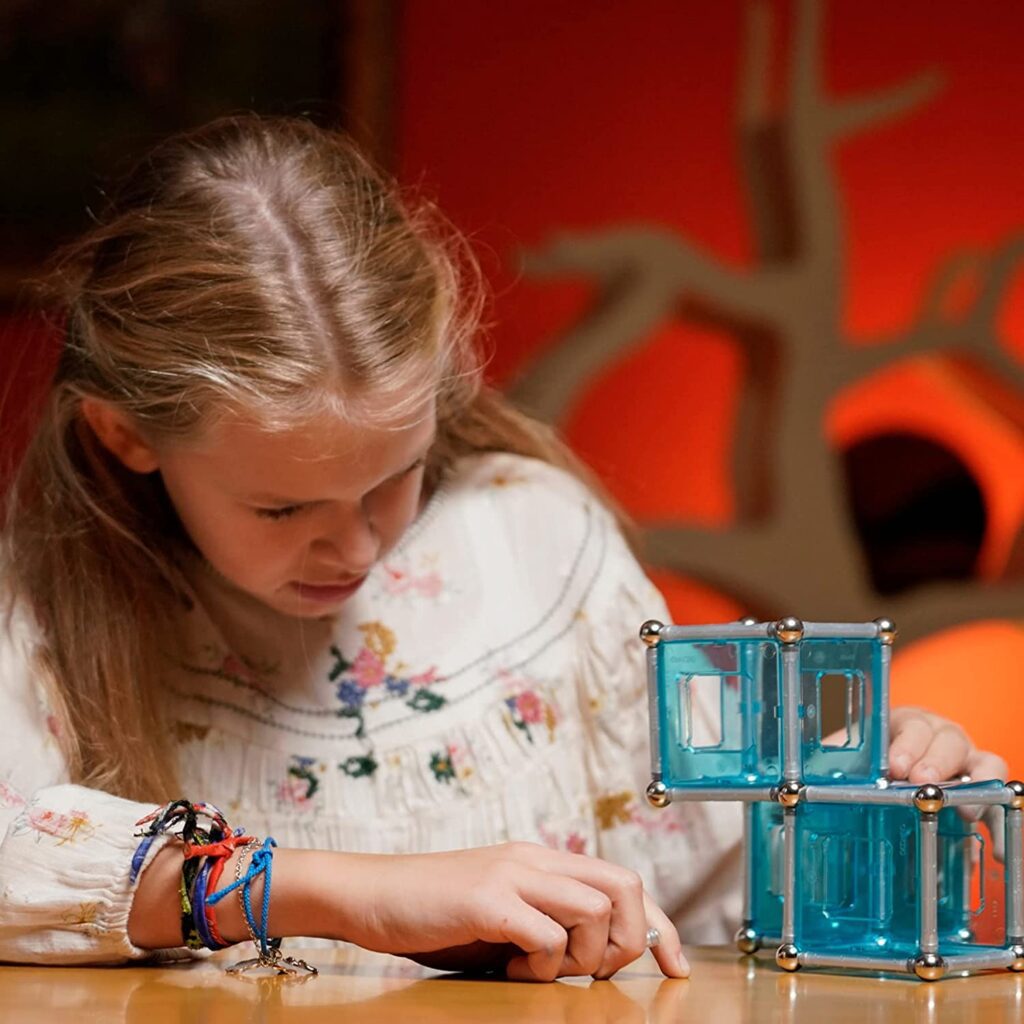10 Classic Toys that were Invented By Women – Part 1
You may have heard the phrase “Necessity is the mother of invention.” Sometimes, that mother is literal. Women inventors have a strong history in the United States. In the decade following the Patent Act of 1790, 2,297 women received US patents — an astounding number considering the barriers to women in technical education at that time. Many of these inventions include things still in use today: the circular saw, the pressurized dish washer, a hand-cranked ice cream maker.
There has been a steady increase in women-fueled innovation since then. In 2021, 22.9% of international patent applications listed women, up from 16.5 percent in 2020. Still, there’s a lot of room for women to step into the inventor’s spotlight. We at Diversity in Toys hope to empower young girls to see themselves as scientists, engineers, innovators, and entrepreneurs.
So naturally, we had to ask ourselves, What toys or games have been invented by women?
Below we share our findings of classic toys that were designed by innovative female creators.

One thing that amazed us as we researched this list was the diversity of the women represented here. Each lady listed below demonstrated resourcefulness, ingenuity, and business savvy. But, they all come from different ethnic and socioeconomic backgrounds, educational levels, political views, and personal goals. We hope that the young women in your life can see themselves in this list and are inspired to think what they can bring to the table.
In honor of Women’s History Month, here are 10 iconic toys and games that were invented by women.
1. Adeline D.T. Whitney, inventor of (a type of) alphabet blocks
Adeline Dutton Train Whitney is best known as a poet and a writer. Born in 1824 in Boston, Massachusetts, Whitney loved literature from a young age. She received a conservative education and held rather traditional views, maintaining that a woman’s place was in the home. She was ardently anti-woman’s suffrage even as the feminist movement gained steam. Nonetheless, Whitney wrote more than 20 books for young girls in her lifetime. She also designed an early version of a toy that continues to educate youngsters on their letters and numbers: the alphabet block.
Whitney’s blocks had a significant distinction from the alphabet blocks we know today. Instead of each block representing a whole letter on it, Whitney’s blocks each represented a segment of a letter, either a straight line of varying lengths or a curved arc. These blocks could be put together to form a letter of the alphabet or a number.

2. Ruth Faison Shaw, inventor of finger paints
Listed at #7 on Time Magazine’s list of 100 Greatest Toys of All Time, fingerpaint is probably the most common art supplies used in the country in both schools and homes. Its inventor, Ruth Faison Shaw, was a teacher and art therapist. Shaw was born in rural North Carolina in the late 1800s. She and her siblings had to find ways to entertain themselves, so Shaw grew up valuing free play and creativity.

As a YMCA volunteer following World War I, Shaw traveled abroad entertaining soldiers with art and music. She so fell in love with Europe that she later returned to Italy to teach at a Montessori school. The Montessori method emphasizes hands-on experimentation and independent, child-led learning. Story has it that Shaw found a student who had been sent to the bathroom to tend to a paper cut happily smearing reddish iodine (an antiseptic) on the walls. This was the spark for Shaw to develop finger painting, an approach to self expression that was literally “hands-on”.
Shaw researched nontoxic paint options for use by children for five years before she perfected a vegetable-based recipe that was pleasant to touch and easily washed off. In 1931, she finally presented her new product to a classroom of children. The children were immediately smitten with the tactile, messy craft.

3. Elizabeth Magie, inventor of Monopoly
Since its introduction in 1935, the board game Monopoly has been a cornerstone of many people’s childhood (and childhood feuds!). Over 250 million Monopoly games have been sold in the last eight decades, and the game has been played by more than 1 billion people worldwide. It’s fair to say that Monopoly is one of the most famous board games in history. But, what’s lesser known is the story behind its creation and the strong minded woman who invented it.
Elizabeth Magie was born in 1866 in rural Illinois. Her father was a heavily political newspaper editor and abolitionist who impressed on his daughter ideas of radical social reform. Ironically, James Magie was an ardent anti-monopolist. He believed instead that individuals should own 100 percent of what they create and that land ownership should be shared equally among its users.
Elizabeth was passionate about women’s issues. She was particularly worried about the lack of career options for women who did not want to rely on marriage for their financial stability. Magie supported herself with myriad jobs, including as a stenographer, as a secretary, and as a poet and comedian (occasionally working as all three at the same time!). She also spent her spare time creating a board game that she hoped would impress on players her father’s anti-monopolist ethos.

This game, which she called “The Landlord’s Game,” shared many features that we would recognize on the now ubiquitous Monopoly board: the Go To Jail space, railroads, and a Public Park spot. However, her version had two sets of rules. First Magie wrote a monopolist set where the goal of the game was to buy spaces and dominate opponents. Then she an anti-monopolist set where players were rewarded when any wealth was created and shared.
The lesson she hoped to teach players may be obvious: concentrating land ownership in private monopolies hurts just about everyone.

Magie applied for a patent for her game in 1903. The Landlord’s Game was immediately popular, particularly on college campuses in the northeast. In 1935 another game was presented to the patent office: Monopoly as we know it today, with the familiar property spots and modern, one-set monopolist rules intact. Parker Brothers quickly bought the rights to this new game. They bought Magie’s patent as well to discourage any other copycat games from hitting the market.
4. Eleanor Abbot, inventor of “Candy Land”
One of childhood’s sweetest pastimes was actually created to entertain children in polio wards in the 1940s. Eleanor Abbot was a retired California schoolteacher. During a polio outbreak, which used to disable and even paralyze an average of 35,000 people each year, Abbot caught the disease. She found herself sharing a hospital ward with children who were bedridden and bored.
So, she designed a simple, colorful board game to distract the children from the pains they were suffering. Candy Land’s simple design and rules made it accessible to players as young as three years old. Plus, the vibrant setting allowed children to escape into a magical fantasy world.

In 1949, Abbot sent her design to the Milton Bradley Company, the precursor to Hasbro. Candy Land became a bestseller and put Milton Bradley in the same league as their main board game competitor, the Parker Brothers. The game continues to be a fan favorite, with a million copies selling every year in both physical and digital formats.
Abbot continued to keep children at the front of her focus. Though Abbott received royalties for her game design, she used most of the money to buy supplies and equipment for schools.
5. Ruth Handler, inventor of the Barbie Doll
Ruth Marianna Mosko Handler may easily be the most famous female toy creator. The Barbie doll has set numerous records in global sales and universal recognition. A Barbie doll is sold somewhere in the world every three seconds. Barbie was even included in America’s official time capsule in 1976.
Handler did not begin as a doll designer. Born in 1916 in Denver, Colorado, Handler worked from a young age at her family’s pharmacy and soda fountain. She described herself as a tomboy who enjoyed wrestling more than playing with dolls. She and her husband moved to Los Angeles in the 1930s so she could work as a secretary with Paramount Pictures. Her husband Elliot, an aspiring artist, worked as a furniture maker.
Elliot started to experiment with making chairs out of new materials such as Plexiglas and Lucite. His wife saw an even bigger opportunity in the acrylic plastics. She watched her daughter Barbara playing with paper dolls and imagined that the new materials could be used to create a durable, longer lasting doll.

She also imagined that a doll made of hard plastic could actually look like a woman. The typical doll previously had been a baby, not an adult. An adult female doll, Handler thought, could do more than be rocked and coddled. An adult female doll could have careers and hobbies and friends. She could inspire the girls who played with her to think of future possibilities beyond homemaking.
“My own philosophy of Barbie,” Handler wrote in her autobiography, “was that through the doll, the little girl could be anything she wanted to be. Barbie always represented the fact that a woman had choices.”
In 1959, Handler presented her new doll at the New York International Toy Fair. The businessmen in attendance were not impressed — they wagered that the year’s best seller would be a plastic rocket. But, consumers voted differently. Barbie dolls were immediately popular in stores. Around 350,000 dolls sold that first year.
Barbie’s popularity has continued to grow. Over 58 million Barbie dolls sell annually. Barbie has had over 200 careers, including astronaut, president, surgeon, and journalist. Mattel, the company behind the smash hit doll, has also continued to grow its inclusion efforts. In 1997, the company debuted Share a Smile Becky, the first fashion doll to come with a wheelchair. In 2016, Mattel also began offering dolls with different body types including tall, curvy, and petite.

Enjoying this list? Check in later this week to read Part 2!


